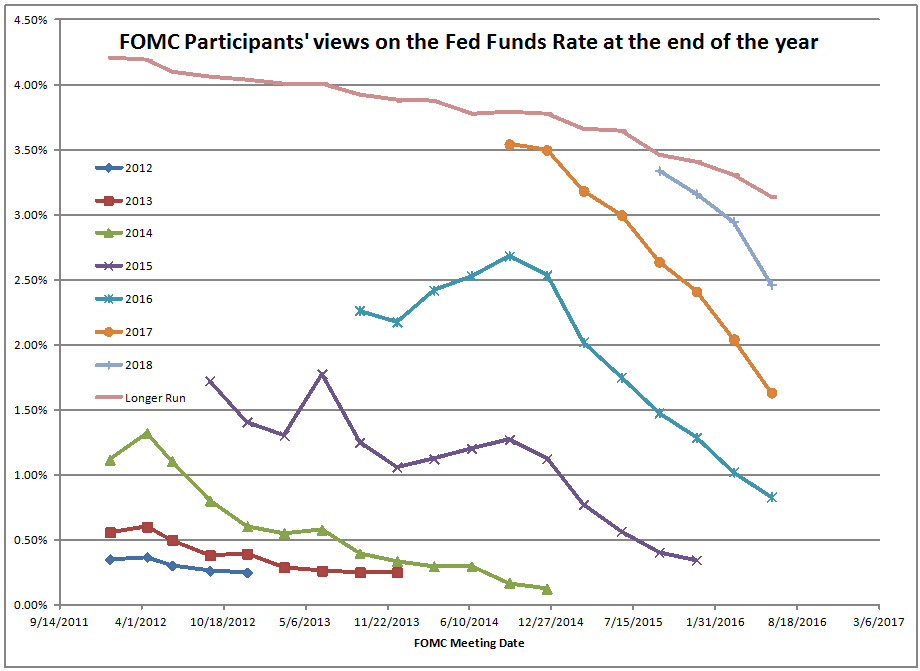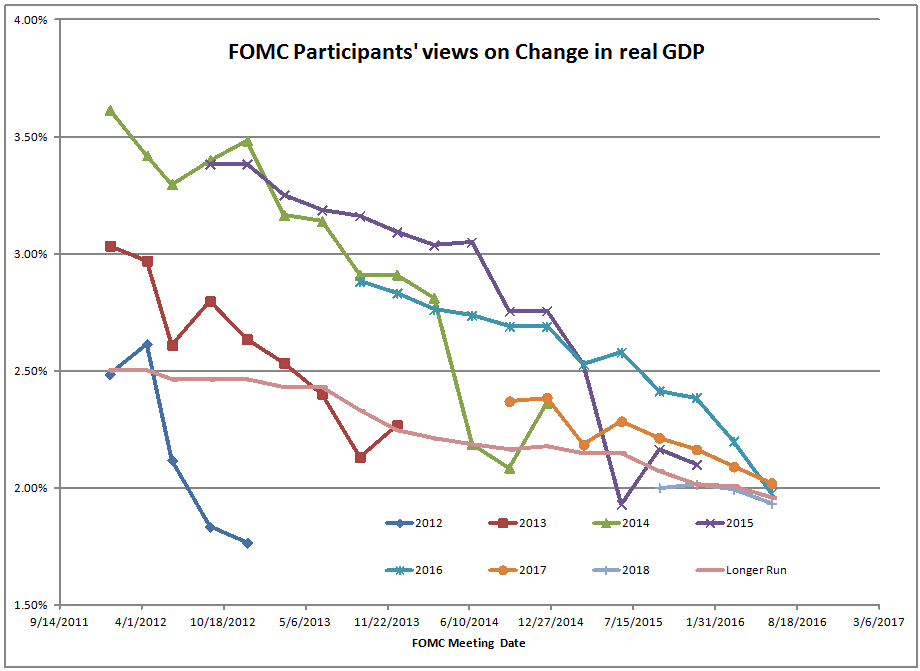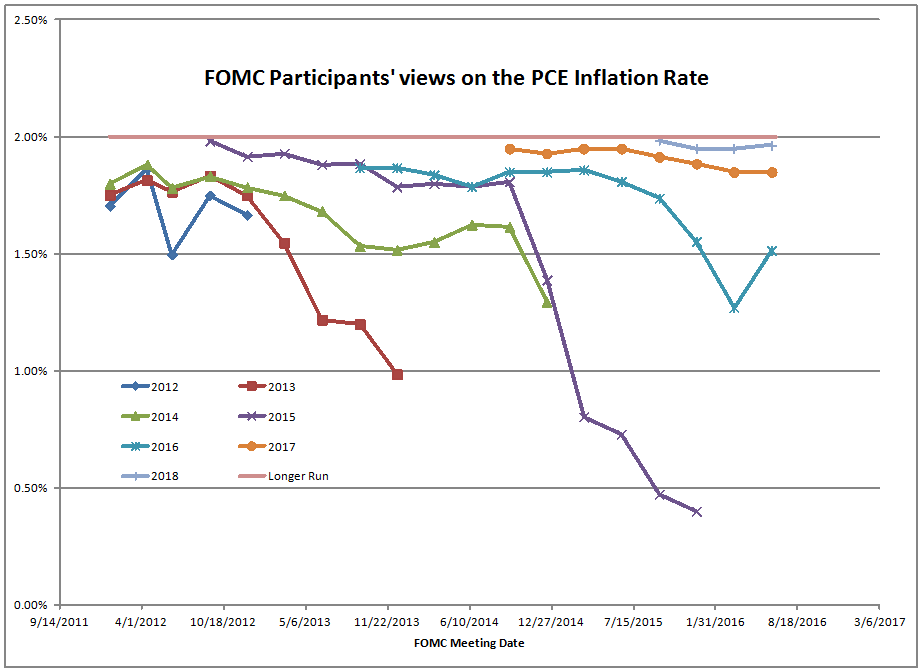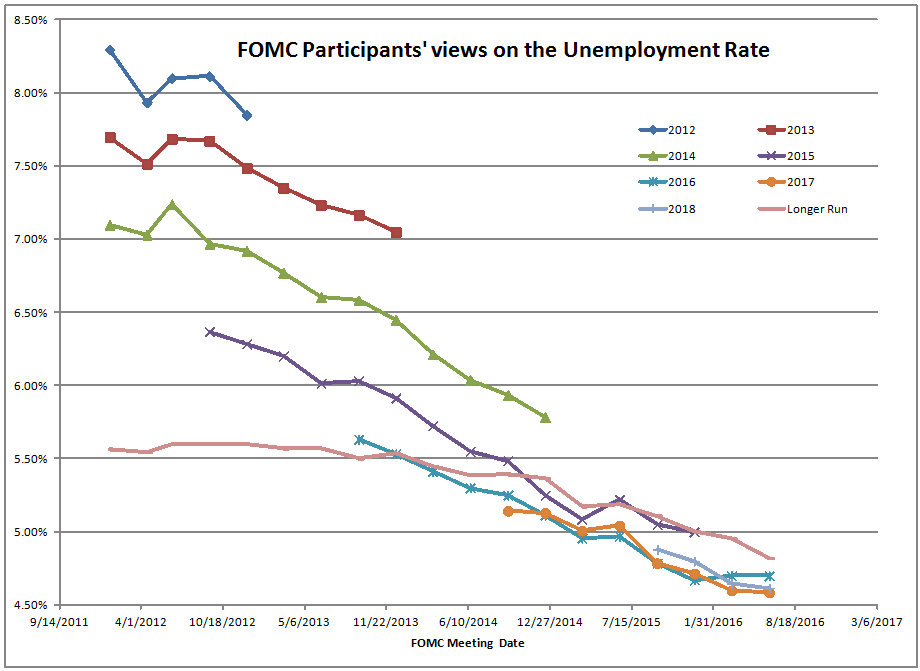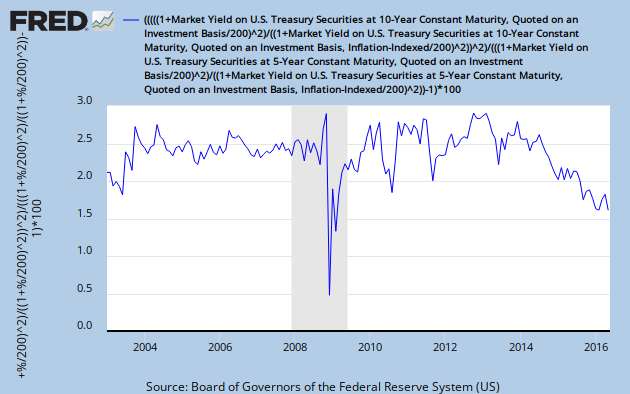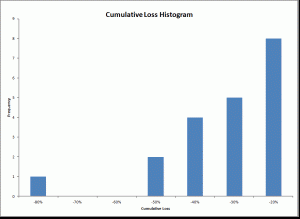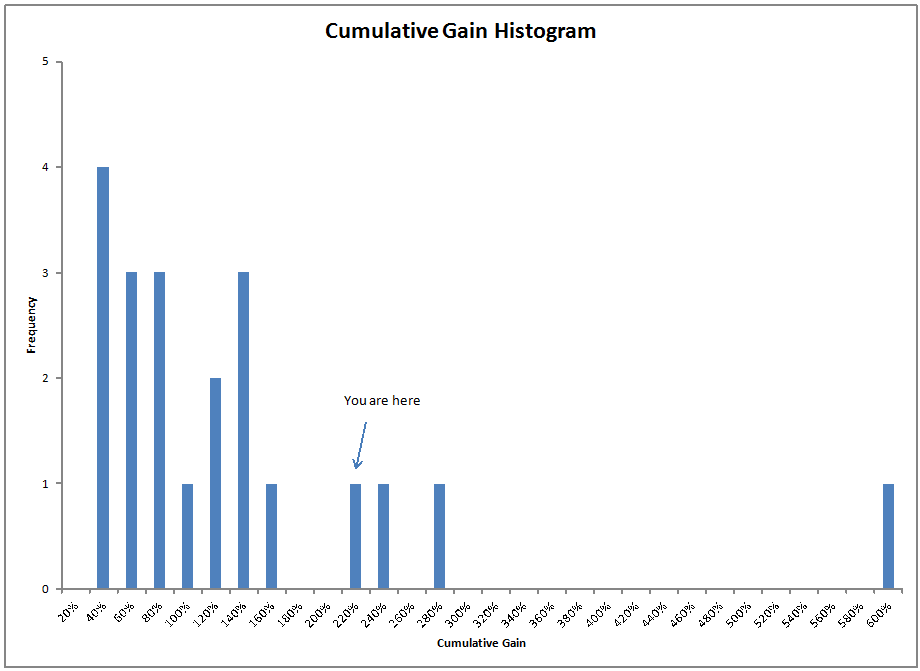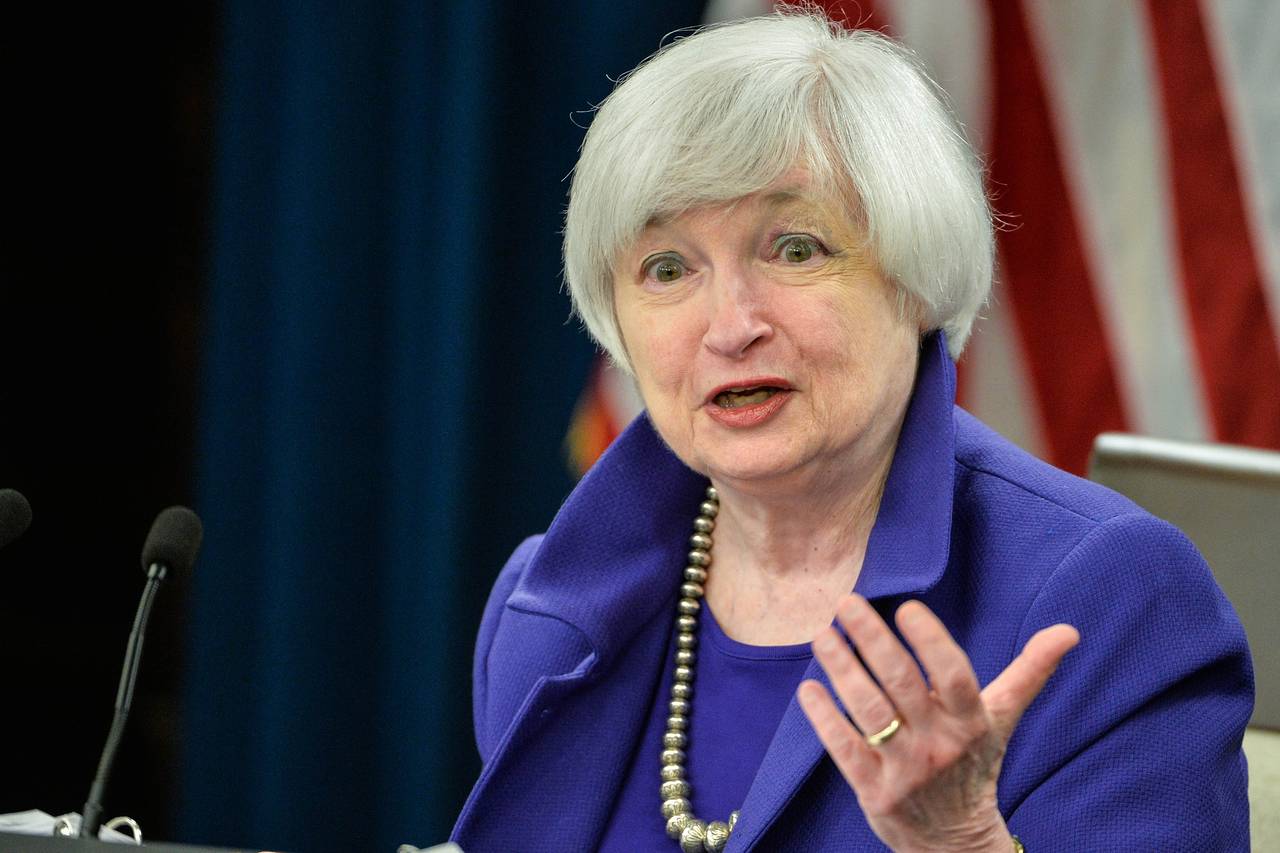Thinking About Monetary Policy: A Counterfactual

==============================
I received an email from a longtime reader:
David, here is a (possibly useless) thought experiment.
In 2005, PIMCO’s Paul McCulley was begging Ben Bernanke to halt the on- going quarter-point raises in the Fed Funds rate at 3.5 percent. I forget his exact reasoning, but he clearly thought that the financial markets couldnot accommodate short-term rates above 3.5 percent without substantial disruptions.
Suppose that Bernanke had listened to McCulley and capped the Fed Funds rate at 3.5 percent until it was clear how the markets would fare at that level. Would that alone have been sufficient to postpone or even avert the housing crisis? Or would it have made the crash even worse?
According to FRED, the Funds rate reached 3.5 percent in August 2005, and as we know housing prices nationally peaked about one year later, just as the Funds rate was topping out at 5.25 percent. Question is, did the additional 1.75 percent of increases serve to tip the housing market into decline, or was the collapse inevitable with or without the last seven quarter-point raises?
Any thoughts?
Here was my response:
I proposed the same thing at RealMoney, except I think I said 4%.? My idea was to stop at a yield curve with a modestly positive slope.? It might have postponed the crisis, and maaaaybe allowed banks and GSEs to slowly eat up all of the bad loan underwriting.
I had Googlebots tracking housing activity daily, and August 2015 was when sales activity peaked.? I announced it tentatively at RealMoney, and confirmed it two months later.? From data I was tracking, housing prices flatlined and started heading down in 2006.? The damage was probably done by 2005 — maybe the right level for Fed funds would have been 3%.
The trouble is, hedge funds and other entities were taking risk every which way, and a mindset had overwhelmed the markets such that we had the correlation crisis in May 2005, and other bits of bizarre behavior.? Things would have blown up eventually.? Speculative frenzy rarely cools down without the bear phase of the credit cycle showing up.
So, much as it would have been worth a try, it probably wouldn’t have worked.? The housing stock was already overvalued and overleveraged.? But it might have taken longer to pop, and it might not have been as severe.
But now for the fun question.? Is the Fed trying to do something like that now?? Are they so afraid of popping any sort of asset bubble that they have to be extra ginger in raising rates?? It seems any market “burp” takes rate rises off the table for a few months.
I don’t know.? I do know that the FOMC has only 1% of tightening to play with before the yield curve gets flat.? Also, obvious speculation is limited right now.? There is a lot that is overvalued, but there is no frenzy… unless you want to call nonfinancial corporation and government borrowing a frenzy.
Thanks for writing.
=============================================
The FOMC is Afraid of its own Shadow
If I were the Fed, I would end the useless jabbering that they do. ?I would also end the quarterly forecasts and press conference. I would also end publishing the statement and the minutes, and let people read the transcripts five years later. We would go back to the pre-Greenspan years, when monetary policy was managed better. ? Before I did that I would say:
The Fed has three responsibilities: controlling inflation, promoting full employment, and regulating the solvency of the banking system. ?We are not responsible for the health and well-being of financial markets. ?The ‘Greenspan Put’ is ended.
We will act to limit speculation within the banks, such that market volatility will have minimal impact on them. ?We want our pursuit of limited inflation and full employment to not be hindered by looking over our shoulder at the boogeyman that could affect the banking system. ?To that end, please realize that we will not care if significant entities lose money, including countries that may get whipped around by our pursuit of monetary policy in a way that benefits the American people.
We are not here as guarantors of prosperity for speculators. ?Really, we’re not here to guarantee anything except pursue a stable-ish price level, and to the weak extent that monetary policy can do so, aid full employment.
We hope you understand this. ?We do not intend to use our “lender of last resort” authority again, and will manage bank solvency in a way to avoid this. ?We may get called ‘spoilsports’ by the banks that we regulate, but in the end we are best served as a nation if solvency concerns dominate over the profitability of the banking industry.
As it is, the present FOMC fears acting because it might derail the recovery or spark a bear market in risky assets. ?Going beyond the mandate of the Fed has led to bad results in the past. ?It will continue to do so in the future.
The best way for the Fed to maintain its independence is to act independently and responsibly. ?Don’t listen to outside influences, particularly when hard things need to be done. ?Be the adult in the room, and tell the children that the medicine that you give them is for their good. ?Recessions are good, because they clear away bad uses of capital from the ecosystem, and make room for new more productive ideas to use the capital instead.
As it is, the Fed is afraid of its own shadow, and will not take any hard actions. ?That will either end with inflation, or an asset bubble that eventually affects the banks. ?A central bank like that does not follow its mandate does not deserve its independence. ?So Fed, if you won’t act for our long-term good, will you act to preserve your existence in your?present form?


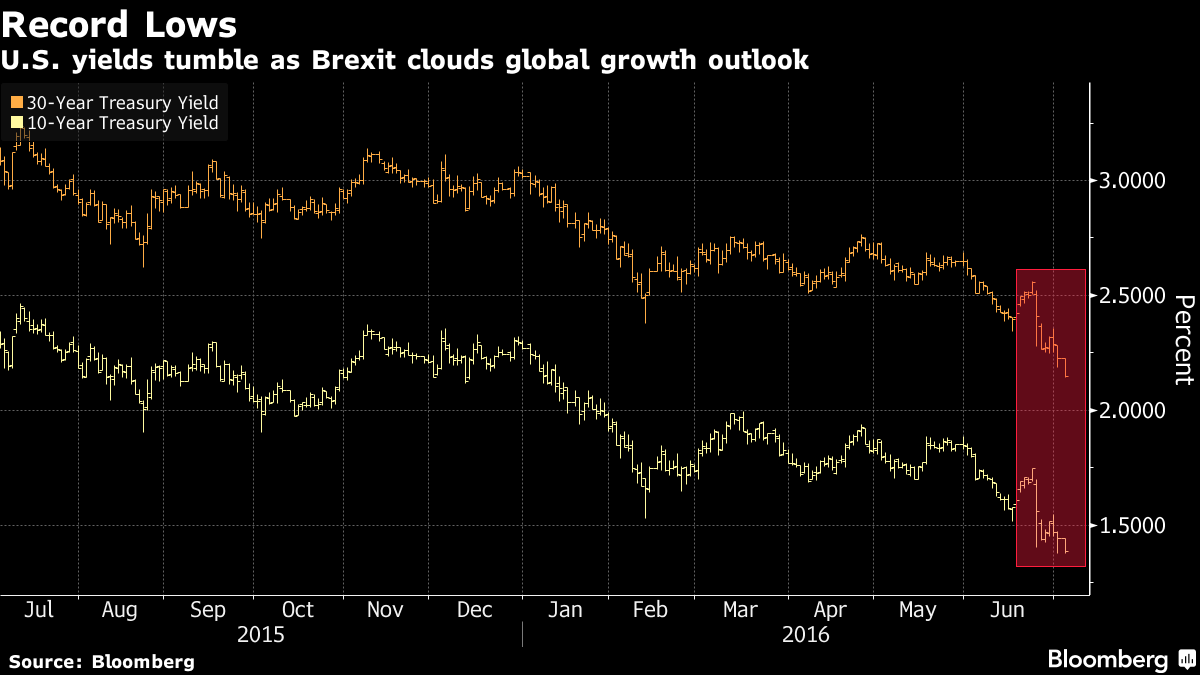
![Picture Credit: Peanuts Reloaded || Perhaps today Brexit; Monday an exit from Italy or Spain; [then] Europe dismantles](http://alephblog.com/http://alephblog.com/wp-content/uploads/2016/06/27818910396_39d46df053_o.jpg)
